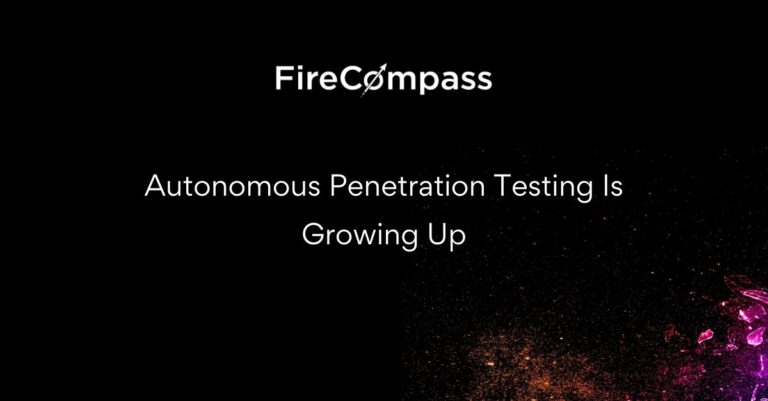What is Red teaming? Red teaming is a valuable technique that can help you to identify and mitigating security vulnerabilities in your organization’s attack surface by simulating real-world attacks.
Organizations use hundreds of tools to conduct traditional or manual red teaming activities in different combinations. Here are top 25 most common tools used by Red Teams to identify weaknesses and vulnerabilities in an organization’s security posture:
| Tool Name | Description |
|---|---|
| FireCompass Automated Recon + Red Teaming | A SaaS tool for performing reconnaissance on external attack surface and automated red teaming and pen testing. FireCompass eliminates the need for repetitive manual effort.. significantly helped to improve delivery speed & the depth-breadth of testing |
| Metasploit | A penetration testing tool that helps identify and exploit vulnerabilities in IT systems. |
| Cobalt Strike | A tool for conducting post-exploitation activities and managing a Red Team operation. |
| Social-Engineer Toolkit (SET) | A toolkit for creating and delivering social engineering attacks, such as phishing emails or phone calls. |
| Empire | A post-exploitation tool for managing and maintaining access to a compromised system. |
| BloodHound | A tool for mapping and visualizing an organization’s Active Directory infrastructure to identify potential attack paths. |
| Nmap | A network scanning tool that helps identify open ports and services on target systems. |
| Wireshark | A network protocol analyzer for capturing and analyzing network traffic. |
| Aircrack-ng | A tool for testing the security of wireless networks by attempting to crack WEP or WPA keys. |
| Responder | A tool for intercepting and stealing user credentials from a target network. |
| Nessus | A vulnerability scanner that helps identify vulnerabilities in IT systems and applications. |
| BeEF | A tool for exploiting web browser vulnerabilities and controlling them remotely. |
| Burp Suite | A web application testing tool for identifying and exploiting vulnerabilities in web applications. |
| PowerShell Empire | A post-exploitation tool for managing and maintaining access to a compromised system using PowerShell. |
| Maltego | A data mining tool for gathering and analyzing information about a target organization or individual. |
| SQLMap | A tool for identifying and exploiting SQL injection vulnerabilities in web applications. |
| John the Ripper | A password cracking tool for identifying weak passwords and testing their strength. |
| Fuzzing tools | Tools for testing applications by sending random or malformed inputs to identify vulnerabilities and errors. |
| Recon-ng | A reconnaissance tool for gathering information about a target, including domain names, email addresses, and social media profiles. |
| Hydra | A password cracking tool for performing brute-force attacks against various network protocols. |
| Hashcat | A password cracking tool for testing the strength of passwords and cracking them using various methods |
| Netcat | A tool for establishing and maintaining network connections, and for performing file transfers and port scanning. |
| THC Hydra | A password cracking tool that can perform brute-force attacks against various network protocols, including HTTP, FTP, and Telnet. |
| Veil Framework | A tool for creating and delivering custom-made malware that can bypass anti-virus software and intrusion detection systems. |
| Mimikatz | A post-exploitation tool for extracting plaintext passwords and other sensitive information from Windows operating systems. |
Limitations of Using Multiple Tools & Manual Red Teaming:
It is important to recognize that manual red teaming has its limitations before you dive deep into it. Here are a few to consider:
- Point-in-time Exercise: In case of manual red teaming, organizations are testing some of the assets some of the time while hackers are attacking all of the assets all of the time.
- Limited Scope: Traditional Red Teaming engagements are often limited in scope and may not cover all aspects of an organization’s security posture. For example, a Red Team may focus on testing the effectiveness of technical controls, but may not assess the effectiveness of organizational policies and procedures.
- Limited Visibility: Manual Red Teaming engagements may not provide the same level of visibility and detail as automated tools, making it more difficult to identify specific weaknesses and vulnerabilities.
- Low Scalability: Manual Red Teaming engagements are often limited in scalability, meaning that they may not be able to keep pace with the evolving threat landscape or the changing needs of an organization.
- Subjectivity: Manual Red Teaming engagements can be subjective, as the effectiveness of the Red Team’s tactics and techniques may depend on the individual skills and experience of the Red Team operators.
- High Cost: Manual Red Teaming is expensive, requiring a significant investment of time and expensive resources. This makes it difficult for organizations to conduct regular Red Teaming engagements.
Using FireCompass for Continuous Automated Red Teaming:
To put it simply, the Continuous Automated Red Teaming capabilities of FireCompass helps you to
- Eliminate the need for multiple tools and repetitive manual tasks.
- Use multi-stage attack playbooks to mimic a real attacker
- Accurately pinpoint and prioritize vulnerabilities that might be targeted first.
- Reduces the mean time to remediation (MTTR)
- Enhance the breadth and depth of your security coverage
- Emulate the latest threat actors
Get a free demo to find out how FireCompass can help you to prioritize risks with real-time alerts for faster detection and remediation.
About FireCompass:
FireCompass is a SaaS platform for Continuous Automated Red Teaming (CART) and Attack Surface Management (ASM). FireCompass continuously indexes and monitors the deep, dark and surface webs using nation-state grade reconnaissance techniques. The platform automatically discovers an organization’s digital attack surface and launches multi-stage safe attacks, mimicking a real attacker, to help identify breach and attack paths that are otherwise missed out by conventional tools.
Feel free to get in touch with us to get a better view of your attack surface.











